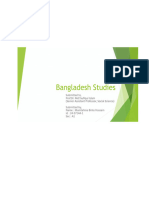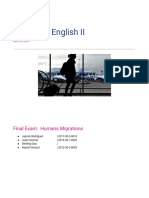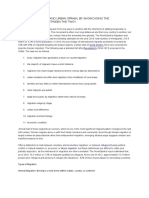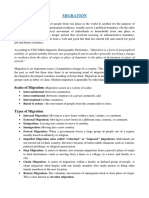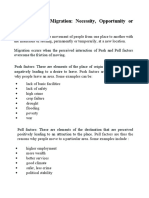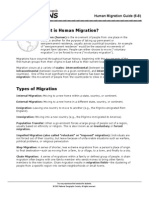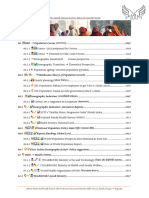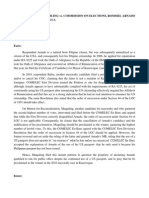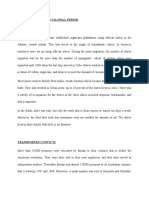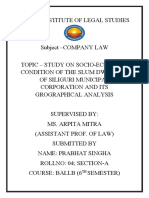0% found this document useful (0 votes)
33 views2 pagesMigration
Migration is the movement of people from one place to another, classified into various types such as immigration, emigration, permanent, temporary, voluntary, and forced. The reasons for rural to urban migration often involve push factors like conflict and economic decline, and pull factors such as better job opportunities and living conditions in cities. While migration can lead to negative consequences like resource depletion and social unrest, it also contributes to development and income through remittances.
Uploaded by
srnaim1997Copyright
© © All Rights Reserved
We take content rights seriously. If you suspect this is your content, claim it here.
Available Formats
Download as DOCX, PDF, TXT or read online on Scribd
0% found this document useful (0 votes)
33 views2 pagesMigration
Migration is the movement of people from one place to another, classified into various types such as immigration, emigration, permanent, temporary, voluntary, and forced. The reasons for rural to urban migration often involve push factors like conflict and economic decline, and pull factors such as better job opportunities and living conditions in cities. While migration can lead to negative consequences like resource depletion and social unrest, it also contributes to development and income through remittances.
Uploaded by
srnaim1997Copyright
© © All Rights Reserved
We take content rights seriously. If you suspect this is your content, claim it here.
Available Formats
Download as DOCX, PDF, TXT or read online on Scribd
/ 2




















